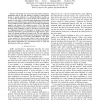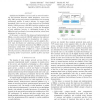191 search results - page 35 / 39 » On Detecting Camouflaging Worm |
INFOCOM
2009
IEEE
14 years 5 months ago
2009
IEEE
—The spread of a source host is the number of distinct destinations that it has sent packets to during a measurement period. A spread estimator is a software/hardware module on a...
INFOCOM
2008
IEEE
14 years 5 months ago
2008
IEEE
Sophisticated middlebox services–such as network monitoring and intrusion detection, DDoS mitigation, worm scanning, XML parsing and protocol transformation–are becoming incre...
NOMS
2008
IEEE
14 years 5 months ago
2008
IEEE
Abstract—System availability is difficult for systems to maintain in the face of Internet worms. Large systems have vulnerabilities, and if a system attempts to continue operati...
CCS
2006
ACM
14 years 2 months ago
2006
ACM
Most of the recent work on Web security focuses on preventing attacks that directly harm the browser's host machine and user. In this paper we attempt to quantify the threat ...
USS
2004
14 years 6 days ago
2004
A honeypot is a closely monitored network decoy serving several purposes: it can distract adversaries from more valuable machines on a network, can provide early warning about new...



